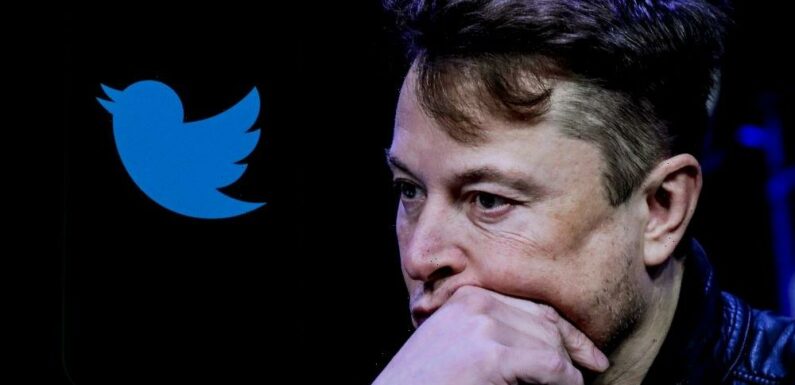
Elon Musk, Twitter’s new overlord, promised advertisers that he wouldn’t turn the social network into a “free-for-all hellscape.” But many big marketers didn’t believe him — and hundreds temporarily halted their spending on Twitter amid concerns that Musk’s ownership would present “brand safety” risks.
The concern: that their ads could show up adjacent to hate speech, misinformation or other objectionable material. Musk, a self-proclaimed free speech “absolutist,” has reinstated thousands of Twitter accounts that had previously been banned, including those of Donald Trump; neo-Nazi Andrew Anglin; and Andrew Tate, who has been arrested in Romania on human trafficking and rape charges. Last month, Twitter dissolved its Trust and Safety Council, an advisory group of about 100 independent civil, human rights and other organizations formed in 2016 to provide guidance on content moderation policies. Several independent researchers have found that hate speech has increased on Twitter since Musk took over the company in late October; Musk has disputed the accuracy of those studies.
Now, in hopes of persuading ad buyers that Twitter can be a clean, well-lighted place for their marketing messaging, the company has inked deals with a pair of third-party ad tech companies, DoubleVerify and Integral Ad Science (IAS), aimed at giving advertisers new tools to quantify and analyze the brand safety of ad campaigns on Twitter. The new solutions are compliant with the World Federation of Advertisers’ Global Alliance for Responsible Media (GARM) standards, according to the companies.
“Twitter is committed to promoting a safe advertising experience for people and brands, and this commitment has never been stronger,” AJ Brown, Twitter’s head of brand safety, said in a statement. Brown, a six-year Twitter veteran, and was named head of brand safety in November 2022.
Under DoubleVerify’s expanded partnership with Twitter, DV will offer in-feed brand safety and suitability measurement of content adjacent to all types of ads, including Promoted Tweets, for U.S.-based advertising campaigns. DV’s brand safety and suitability solution will focus initially on Twitter’s Home Timeline, processing and classifying Tweets directly above and below the placement of ads in the timeline. Eventually, DoubleVerify will expand the solution for Twitter’s Profile and Search placements. DV first partnered with Twitter in 2018 and offers fraud and viewability measurement across both display and video campaigns.
According to research firm MediaRadar, the number of U.S. advertisers on Twitter stabilized in the fourth quarter of 2022 after a drop-off following the news of Musk’s takeover. In Q2, the social network had 3,740 U.S. advertisers, which fell to about 3,000 in Q3 — before rebounding to 3,700 in the fourth quarter, per the research company’s estimates.
“Advertisers are demanding comprehensive brand safety and suitability solutions in user-generated content environments,” DoubleVerify CEO Mark Zagorski said in a statement. “Greater brand and content alignment support campaign performance and ultimately, deliver superior outcomes.”
IAS, for its part, similarly will provide Tweet-level analysis about content that appears adjacent to ads on Twitter’s feed. “IAS is excited to provide our customers with Tweet-level insights designed to deliver greater transparency into their Twitter campaigns and measurement aligned with industry standards for brand safety and suitability,” senior VP of product management Craig Ziegler said.
Shortly after Musk closed the $44 billion Twitter acquisition, the tech mogul said the company suffered a “massive drop in revenue, due to activist groups pressuring advertisers, even though nothing has changed with content moderation and we did everything we could to appease the activists.” He added that the activist groups were “trying to destroy free speech in America.”
Meanwhile, since Musk’s takeover, Twitter has lost about 80% of its headcount. The company has about 1,300 employees (including fewer than 550 full-time engineers), down from 7,500 previously, CNBC reported last week.
Read More About:
Source: Read Full Article